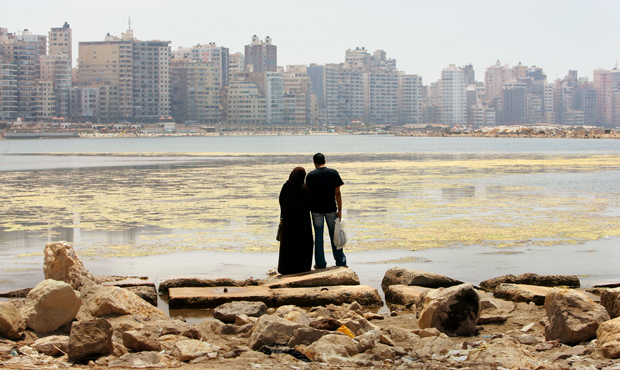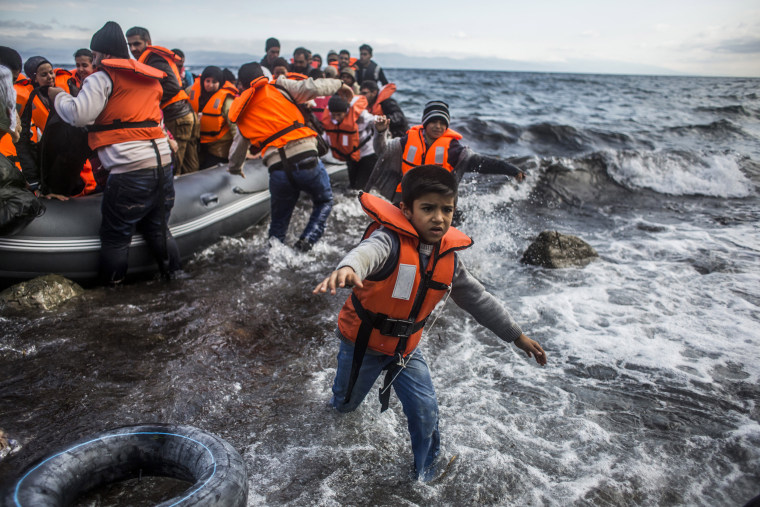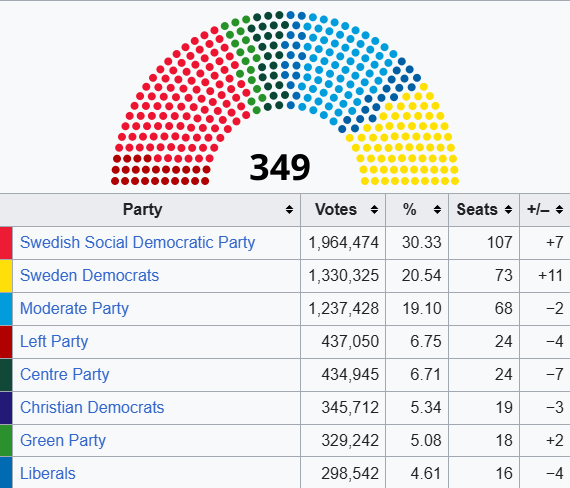Preamble
Sweden has historically been a homogenous (and some argue to be somewhat hegemonic) country racially and culturally. However, in recent years, the country has seen a significant increase in the number of immigrants. There is namely the refugee crisis of 2015, but even before that, there was a decent number of immigrant populations here. This article will start off exploring the refugee crisis and its impacts, but also generally discuss the impacts and implications of immigration in Sweden in general.
The 2015 Immigrant Crisis
In 2015, a series of events led to a massive influx of refugees and migrants into Europe. Sweden took in over 160,000 refugees in 2015, more per capita than any other country in Europe (other than Turkey). The main drivers of this crisis were the ongoing conflicts in Syria, Afghanistan, and other countries, as well as political instability and environmental degradation in the region. Here is a non-comprehensive list of the largest contributing factors:
- Syrian Civil War: The Arab Spring protests in 2011 escalated into a full-blown civil war in Syria, displacing millions of people. Existing issues like water scarcity, land degradation, and food insecurity in the region were exacerbated, leading to poor resource management and further strain on already stressed ecosystems; this, in turn, contributed to social unrest and migration patterns, creating a vicious cycle between environmental and political instability.
- Afghanistan Conflict: The presence of Taliban insurgents and ongoing civil conflict in Afghanistan forced many people to flee their homes in search of safety and security.
- Boko Haram Insurgency: An armed rebellion by the Islamist group Boko Haram in Nigeria and neighboring countries led to widespread displacement.




The vast majority of asylum seekers in Sweden came from Syria, Afghanistan, and Iraq. Generally, Sweden’s open border policy and generous welfare system made it an attractive destination for refugees. It took 12.4% of all asylum seekers in the EU in 2015 - one of the highest per capita in the EU - leading to a 108% increase in asylum applications compared to 2014.
Short-Term impacts
The immediate impacts of a refugee influx is a complex topic, but generally, it makes logical sense to be at least a temporary net negative on the host country’s economy and natural resources. This does apply to Sweden, as the sudden increase in population strained public services, housing, and social welfare systems. The government faced challenges in providing adequate housing, healthcare, and educational services to the new arrivals.
The following are a list of changes observed in Swedish societies after the initial refugee wave, although one must keep in mind that these changes may or may not be caused by the refugees themselves, but rather are correlated with their arrival:
- Labor Market: Municipalities with higher refugee inflows experienced increased unemployment and reduced wage levels. There were more displaced local workers and reduced tax revenues, straining local economies.
- Crime Rates: Assault and fraud-related crimes per capita rose in areas with more refugees. However, some types of crimes, such as theft, showed negative correlations with refugee presence. (This data is from a single master’s thesis and should be taken with caution.)
Semi-Longterm increase of crime rates among immigrants
While migration has generally been promoted as beneficial before the refugee influx, quantitative crime statistics challenge this notion. A 2017 study found that 58% of crime suspects were migrants, rising to 73% for murder and manslaughter, with Sweden’s murder rate quadrupling in recent decades. This gives a negative image of immigrants to some and will be discussed more below.
Segregation of immigrants
A 2020 paper showed that the influx of foreign-born populations has resulted in migrant and ethnic concentrations that frequently overlap with areas of concentrated poverty. The authors demonstrated that residential sorting by income is strongly tied to ethnic concentration. The findings suggest that “ethnic preferences, influenced by budgetary limitations, lead to persistent immigrant clustering”.
In metropolitan dense settlements, there is a marked income gradient across neighborhoods with varying foreign-born concentrations. This gradient is especially pronounced for Swedish-born individuals with non-Swedish backgrounds and foreign-born individuals, while weaker for Swedish-born individuals with Swedish backgrounds. However, outside dense settlements, income gradients are negligible for Swedish-born individuals irrespective of background, though some signs exist for foreign-born individuals.
These results suggest that with the increasing migrant densities, (especially in urban areas) it has accelerated the lowering of average incomes for neighborhoods with high foreign-born concentrations. This polarization and its persistence and worsening overtime is quite similar to many historical cases (such as the racial & income segregation observed among people of African American origin in New Orleans, USA) despite modern day Sweden’s low levels of systemic racism especially compared to historical cases.
Environmental and Natural Resource Impacts
A somewhat overlooked aspect of the refugee crisis is its environmental impact and the needs for natural resources it brings.
Generally, the large increase of refugees causes increased pollution in Europe, partly due to the increase of population in urban areas as well as the refugee camps themselves that contribute trash and plastic. The rapid expansion of refugee settlements often leads to overcrowded conditions, placing pressure on local infrastructure and waste management systems. In many cases, inadequate waste disposal facilities in refugee camps exacerbate the problem, leading to improper waste handling and contamination of surrounding environments. The points mentioned here I have not found any specific media coverage for, and is interesting to consider whether any of this is true for Sweden.
Another general trend is that carbon emissions increase as a result of a rapid increase in humans. However, a 2023 study found that the influx of refugees (including before and after 2015) actually reduced the greenhouse gas (GHG) emissions per capita in Sweden specifically. The authors suggested that this may be due to the developed resettlement programs, large land mass per capita, and environmentally conscious policies. Additionally, higher natural resource rents in Sweden reduce GHG emissions, attributed to resource reuse, renewable energy development, and reduced dependence on fossil fuels.

A possible explanation for this reduction in emissions despite a large influx of refugees is Sweden’s robust infrastructure and focus on sustainability. The country has long invested in renewable energy, with a significant share of its energy coming from hydroelectric, wind, and bioenergy sources. This energy mix, alongside policies promoting resource efficiency, helps offset the potential carbon footprint that might come with higher populations. Additionally, Sweden’s land use and urban planning strategies prioritize green spaces and eco-friendly housing, which can mitigate the environmental impact of increased urbanization. Therefore, while the environmental challenges of refugee influxes are undeniable, Sweden’s proactive measures in sustainability help to buffer some of the negative effects, making it an interesting case study in balancing humanitarian efforts with environmental responsibility.
Shifting of public sentiment and policies
Initially, the country adopted a strong humanitarian position, reflected in media coverage and political rhetoric, focusing on saving lives and welcoming refugees. However, as aforementioned impacts were building, sentiment and policy had to shift to accommodate the new reality.

Just months after the largest wave of refugees arrived, the government introduced significant restrictions, including tightened border controls, temporary residency for protection beneficiaries, and stricter self-sufficiency requirements in November 2015. These measures aimed to manage the strain on resources and encourage a more equitable distribution of refugee responsibility across EU states. The changes were framed as undesirable but necessary to safeguard societal trust and ensure long-term sustainability. This marked an end to its uniquely welcoming attitude towards all refugees. The temporary measures later became more permanent, with further shifts like compulsory language requirements for citizenship. This reorientation reflected a broader European trend of emphasizing integration and shared responsibility over open-door policies.
Recent Rise of Violence linked to immigrants
More recently, according to former Swedish prime minister Magdalena Andersson, Sweden has “failed to integrate many of the immigrants who have settled there over the past 20 years, creating a nation of parallel societies… living in different realities.” This was said in response to the riots in 2022-2023. This links to the aforementioned segregation that pairs with the inability to properly allow immigrants to immerse themselves in Swedish society. The specific riot mentioned was the result of an anti-immigrant provocateur, the Danish-Swedish politician Rasmus Paludan that threatened to tour the country burning the Qu’ran.

There are many instances of public backlash against the government’s handling of the crisis, with some feeling that the government has not done enough to address the challenges - mostly crime and segregation - posed by the refugee influx. There are fears that the issues will grow uncontrollable. This also has the negative effect of the antagonization of all immigrants even though there obviously are many who strictly contribute positively to the country. Regardless, these sentiment shifts have resulted in Sweden now having one of Europe’s most restrictive policies.
Shift in Political Landscape
After general Swedish election 11th of September 2022, a relatively right-wing minority coalition took office, depending on support from the previously isolated Sweden Democrats. This was a significant shift from the previous left-wing government and in fact was one of the first times that the Sweden Democrats had this much power. 1 in 5 voters voted for the Sweden Democrats - who are characterized to be anti-immigration, anti-multicultural, national part by Gothenburg political scientist Johan Martinsson - which means that there is a broader shift towards nationalism in Swedish politics, challenging the long-standing Swedish consensus.

The rise of the Sweden Democrats can be largely attributed to growing public concerns about immigration, which became a central issue during the 2022 elections. Although other factors like inflation, the pandemic, and the Russian invasion of Ukraine also influenced voter sentiment, immigration remained a key focus of the Sweden Democrats’ campaign. Their rhetoric framed asylum seekers as national security threats, linking them to terrorism and crime. This messaging fueled calls for stricter border controls and more aggressive detention and deportation policies, according to the Migration Policy Institute. The increased prominence of anti-immigration sentiment likely played a significant role in the Sweden Democrats’ rise to power.
Key Policy Milestones
- Past and 2014: Sweden receives more asylum applications by the year
- Mid 2015: Sweden accepts over 160,000 refugees as a part of its open-door policy.
- Late 2015: Introduction of temporary border controls and asylum restrictions. The “Tido” agreement is signed where the Moderate Party, Christian Democrats and Liberals make conditions and requirements for family reunification, labor immigration and Swedish citizenship much more strict.
- June 2017 The Supreme Administrative Court ruled that illegal immigrants that stay after asylum rejection are not entitled to welfare.
- September 2024: Swedish Government announces it will raise existing benefits to migrants who voluntarily return to their home countries to around 34 thousand USD in 2026.
Conclusion
The country has experienced both challenges and opportunities as it navigates the integration of immigrants, including increased pressure on public services, housing, and social systems. There have been many issues and what seems to be not much positives related to immigration. It has also highlighted issues such as social segregation, strain on resources, and rising public concerns over security and social cohesion. The debate surrounding immigration in Sweden underscores the need for balanced policies that address both the benefits and challenges of immigration, while ensuring the effective integration of newcomers into Swedish society.